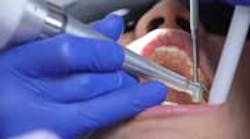So you want to invest in a dental laser
In 1997, the Food and Drug Administration (FDA) approved the first dental laser capable of treating both soft and hard tissues of the oral cavity. At that time, the erbium family of lasers—which included both the erbium:YAG (yttrium-aluminum-garnet @ 2940 nm) and the erbium:YSGG (2790 nm)—gave pediatric and general dentists the ability to provide the vast majority of children with a new way of completing restorative dental procedures and soft tissue surgery.
ADDITIONAL READING |4 reasons you need a dental laser in your practice
I look at buying a laser as an investment in our patients, not necessarily as a cost for my practice. I have no regrets about spending many tens of thousands of dollars in getting my lasers more than 15 years ago. My initial investments have been returned many times over, but, more importantly, I’m able to provide my children with the best and most up-to-date care available.
It is interesting that between the time I began my practice in 1974 up until the late 1990s, very little changed in pediatric dental care. When I chose to get my first laser, diodes did not exist. The only choice available for soft tissue was the CO2 and Nd:YAG lasers. Unfortunately, the Nd:YAG did not have adequate power in those early years. When the erbium laser family became available, it was the best choice for treating both hard tissues, such as teeth, and soft tissue. Soon, the diode laser became available at a wavelength of about 810 nm, then 940, 980, and 1064. I have used most of those wavelengths and, without a doubt, within the diode family of lasers, the 1064-diode wavelength provides the fastest and easiest approach for treating oral soft tissues (when soft tissue treatment is the only desired use).
ADDITIONAL READING | 3 tech tools that make the dentist and patient experience better
Once you make the decision to become a laser dental practice, your investment does not end with choosing which laser will best fit into your type of dental practice. Along with the hard and/or soft tissue lasers, you should invest in laser dental loupes of at least 3.5 power or higher. I personally prefer to use a dental operating microscope. The learning curve for the microscope is usually quick and provides many ergonomic advantages over dental loupes.
Insurance statistics say that dentists and hygienists have high instances of mucoskelatal problems due to the way they work on patients. A good dental microscope with inclinable optics allows the dentist to maintain excellent posture during the entire patient treatment appointment. When using the laser and enhanced vision method, a dental chair with elbow rests will also remove strain in the dentist’s neck and shoulders and allow for simple wrist movements for complete procedures.
To complete the total laser investment, I also recommend at least some type of photobiomodulating (PBM) cold laser to allow the dentist to have a complete laser package. PBM lasers can be used to enhance topical anesthetic uptake, further reduce the need for local anesthetics, reduce or eliminate the need for mandibular block anesthesia, and allow for treatment of oral and facial trauma. There are many excellent examples of PBM lasers ranging from simple probes to semiluminous diode laser combinations to sophisticated combinations of both probes and semiluminous diodes and lasers.
Overall, investing in a laser for your dental practice involves a lot of thought and decision-making as to what you want your laser to do for your patients, your practice, and yourself. Keep your eyes wide open to see the tremendous benefits a laser can have on your practice.


